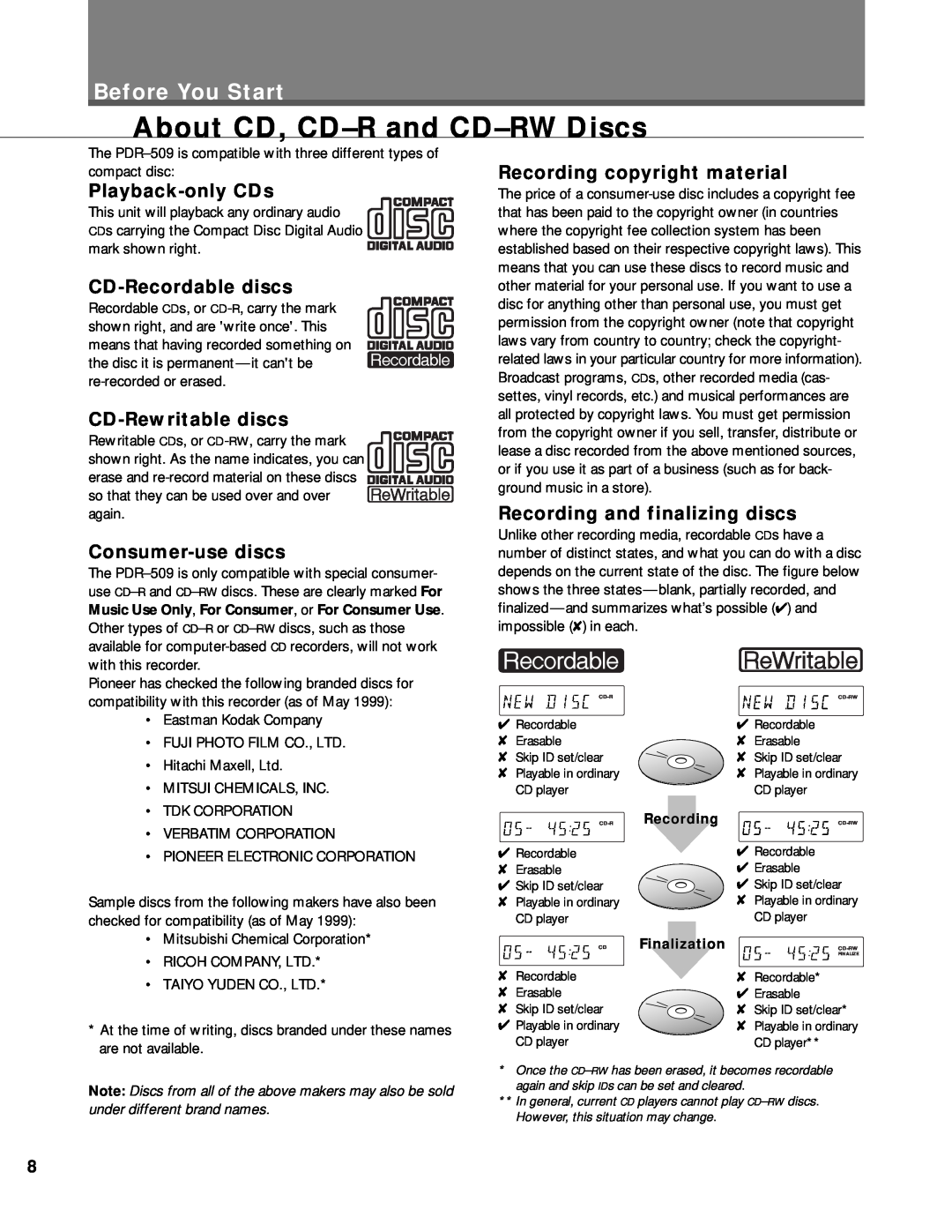
Before You Start
About CD, CD–R and CD–RW Discs
The
Playback-only CDs
This unit will playback any ordinary audio CDs carrying the Compact Disc Digital Audio mark shown right.
CD-Recordable discs
Recordable CDs, or
CD-Rewritable discs
Rewritable CDs, or ![]()
![]()
![]()
![]() so that they can be used over and over
so that they can be used over and over ![]()
![]()
![]() again.
again.
Consumer-use discs
The
Pioneer has checked the following branded discs for compatibility with this recorder (as of May 1999):
•Eastman Kodak Company
•FUJI PHOTO FILM CO., LTD.
•Hitachi Maxell, Ltd.
•MITSUI CHEMICALS, INC.
•TDK CORPORATION
•VERBATIM CORPORATION
•PIONEER ELECTRONIC CORPORATION
Sample discs from the following makers have also been checked for compatibility (as of May 1999):
•Mitsubishi Chemical Corporation*
•RICOH COMPANY, LTD.*
•TAIYO YUDEN CO., LTD.*
*At the time of writing, discs branded under these names are not available.
Note: Discs from all of the above makers may also be sold under different brand names.
Recording copyright material
The price of a
Recording and finalizing discs
Unlike other recording media, recordable CDs have a number of distinct states, and what you can do with a disc depends on the current state of the disc. The figure below shows the three
| ||
✔ Recordable |
| ✔ Recordable |
✘ Erasable |
| ✘ Erasable |
✘ Skip ID set/clear |
| ✘ Skip ID set/clear |
✘ Playable in ordinary |
| ✘ Playable in ordinary |
CD player |
| CD player |
Recording | ||
✔ Recordable |
| ✔ Recordable |
✘ Erasable |
| ✔ Erasable |
✔ Skip ID set/clear |
| ✔ Skip ID set/clear |
✘ Playable in ordinary |
| ✘ Playable in ordinary |
CD player | Finalization | CD player |
CD | ||
✘ Recordable |
| FINALIZE |
| ✘ Recordable* | |
✘ Erasable |
| ✔ Erasable |
✘ Skip ID set/clear |
| ✘ Skip ID set/clear* |
✔ Playable in ordinary |
| ✘ Playable in ordinary |
CD player |
| CD player** |
*Once the
**In general, current CD players cannot play
8
